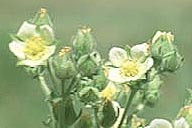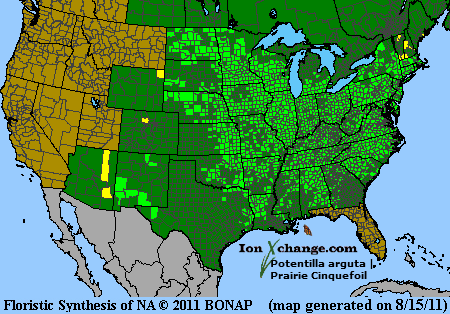 Loading... Please wait...
Loading... Please wait...- Home
- SEEDS
- SEED MIXES
- BUY PLANTS
- Info Request
-
Educational Videos
- Greenhouse Transplanting Demonstration
- Native Seed Cleaning demonstration at Ion Exchange Native Seed and Plant Nursery
- Attracting Butterflies
- Bidens - Bidens cernua Harvest Video
- Big Blue Stem Harvest
- Butterfly Milkweed Video
- Button Blazingstar - Liatris aspera Video
- Buttonbush - Cephalanthus occidentalis Video
- Canada Anemone - Anemone canadensis Harvest Video
- Cardinal Flower - Lobelia cardinalis Video
- Control Burn - Wildflower Field
- Cream Gentian - Gentiana flavida
- Culver's Root - Veronicastrum virginicum Video
- Cup Plant - Silphium perfoliatum Video
- Dormant Seeding | Planting
- Earthyman's Favorite Wildflowers Video
- Eco-Friendly Golf Course Seed Mix
- Floating Islands
- Fringed Loosestrife - Lysimachia ciliata Video
- Giant Yellow Hyssop - Agastache nepetoides Video
- Indiangrass - Sorghastrum nutans Video
- Iowa Prairie Partner Program
- Leadplant - Amorpha canescens (Potted) Video
- Meadow Blazingstar - Liatris ligulistylis
- Midland Shooting Stars - Dodecatheon meadii Video
- Native Plant Nursery Field Irrigation Experiment
- Nodding Onion - Allium cernuum Video
- Ohio spiderwort - Tradescantia ohiensis Video
- Old Man's Beard - Clematis virginiana blooms Video
- Oxeye Sunflower - Heliopsis helianthoides Video
- Prairie Spiderwort - Tradescantia bracteata
- Purple Coneflower - Echinacea purpurea Video
- Rain Garden or Water Garden Video
- Rattlesnake Master - Eryngium yuccifolium Video
- Riverbank Stabilization - Wetland Plants
- Rose Mallow - Hibiscus militaris Video
- Rosinweed - Silphium integrifolium Video
- Royal Catchfly - Silene regia
- Showy Tick Trefoil - Desmodium canadense Video
- Sneezeweed - Helenium autumnale Video
- Swamp Betony - Pedicularis lanceolata Video
- Swamp Milkweed - Asclepias incarnata Video
- Sweet Blackeyed Susan - Rudbeckia subtomentosa Video
- Tall Coreopsis - Coreopsis tripteris Video
- Urban Butterfly Garden
- Wild Bergamot - Monarda fistulosa Video
- Wild Geranium - Geranium maculatum Harvest
- Wild Goldenglow - Rudbeckia lanciniata Video
- Wild Petunia - Ruellia humilis Harvest Video
- Woodland Knotweed - Polygonum virginianum Video
- Yellow Coneflower - Ratibida pinnata Video
- Blog
- Resources
- Policies
Contact Us
Phone:
563-419-0837
or 563-535-7231
Email:
hbright@ionXchange.com
Browse Products
Add to Wish List
You Recently Viewed...
Our Newsletter
Product Description
"Prairie Cinquefoil, Tall Cinquefoil, Five-finger, Glandular Cinquefoil, White Cinquefoil"
Potentilla comes from the Latin and is a diminutive form of the word "powerful". This refers to major medicinal qualities once assigned to another species of the genus Potentilla. Arguta also comes from the Latin and means "sharp", referring to the "teeth" found on the leaf margins.
| Sun Exposure | Prairie, Savanna |
| Soil Moisture | Dry Mesic, Dry |
| Bloom Time |
Summer, Fall June, July, August, September |
| Bloom Color | Yellow |
| Max Height | 2 feet |
| Wetland Code | FAC- |
| Germ Code | C(60), D, G |
| Seeds Per Ounce | 230,000 |
Praire Cinquefoil has an erect, unbranched stems to 3 feet with a dense covering of brown hairs. Basal leaves are cut into 7 to 11 oval segments with the 3 leaves at the end being slightly larger than the others. White to cream-colored flowers appear in loose clusters and bloom from through June and July. Most members of this genus have yellow flowers; P. arguta is an exception to the rule. Very common in open areas throughout the Tallgrass region.
Erect, unbranched stems to 3 feet with a dense covering of brown hairs. Basal leaves are cut into 7 to 11 oval segments with the 3 leaves at the end being slightly larger than the others. White to cream-colored flowers appear in loose clusters and bloom from through June and July. Most members of this genus have yellow flowers; P. arguta is an exception to the rule. Very common in open areas throughout the Tallgrass region.
Specific use of this plant for medicinal purposes was only by the Ojibwa; they powdered the root, put the moistened powder on duck down and used it to control bleeding. It's ability to control bleeding (astringent) is due to the tannins contained in the plant.
Edible Uses: Unknown
Medicinal Uses: Unknown
Herbal Uses: Unknown













